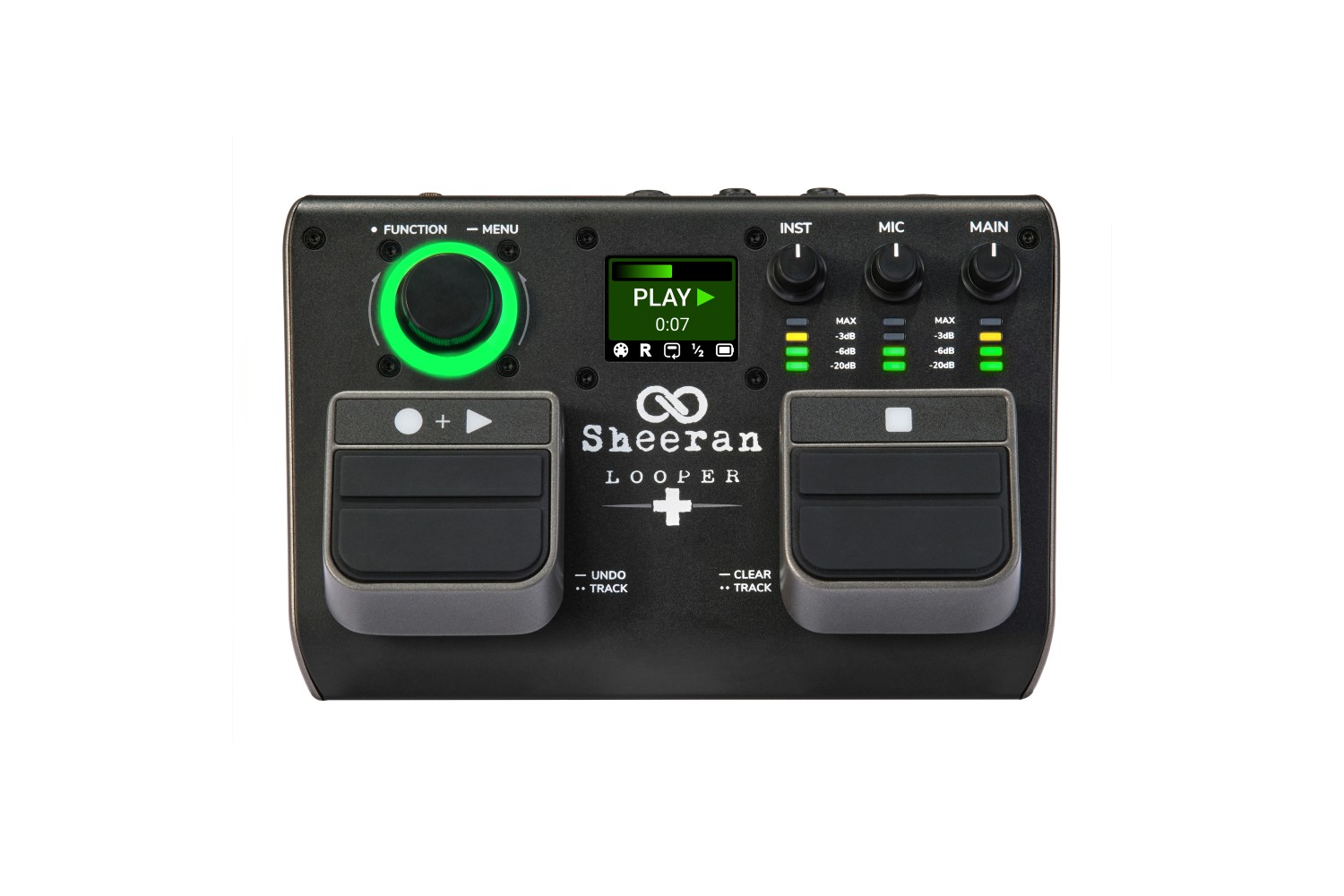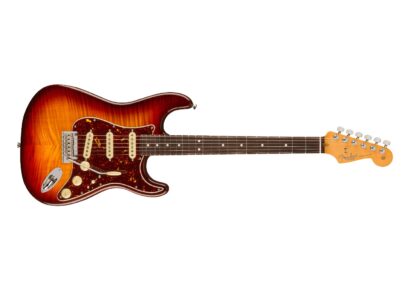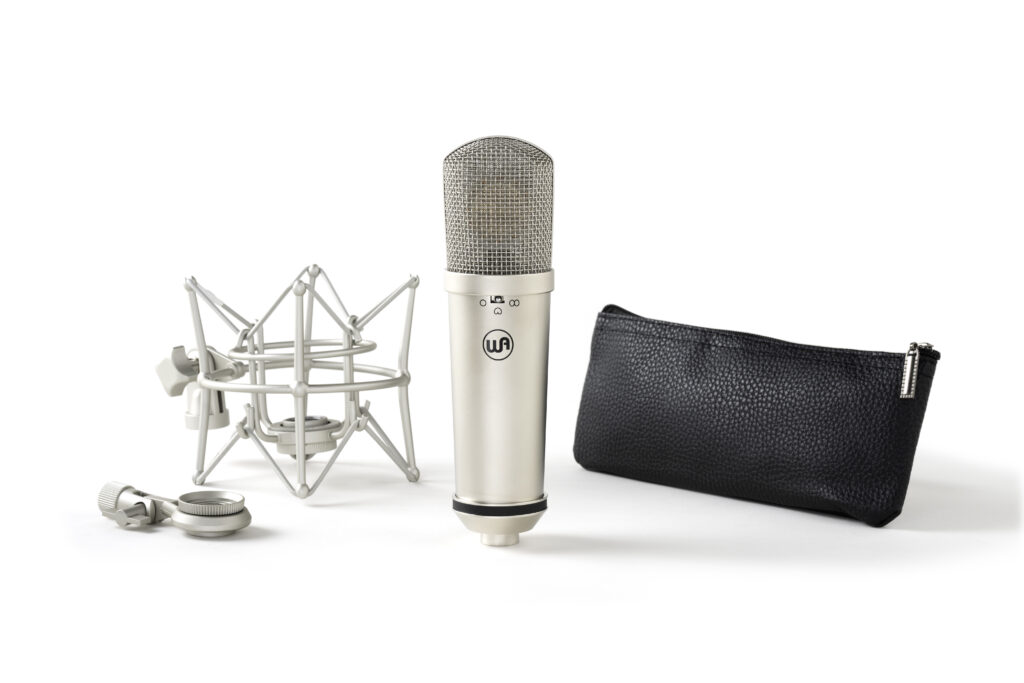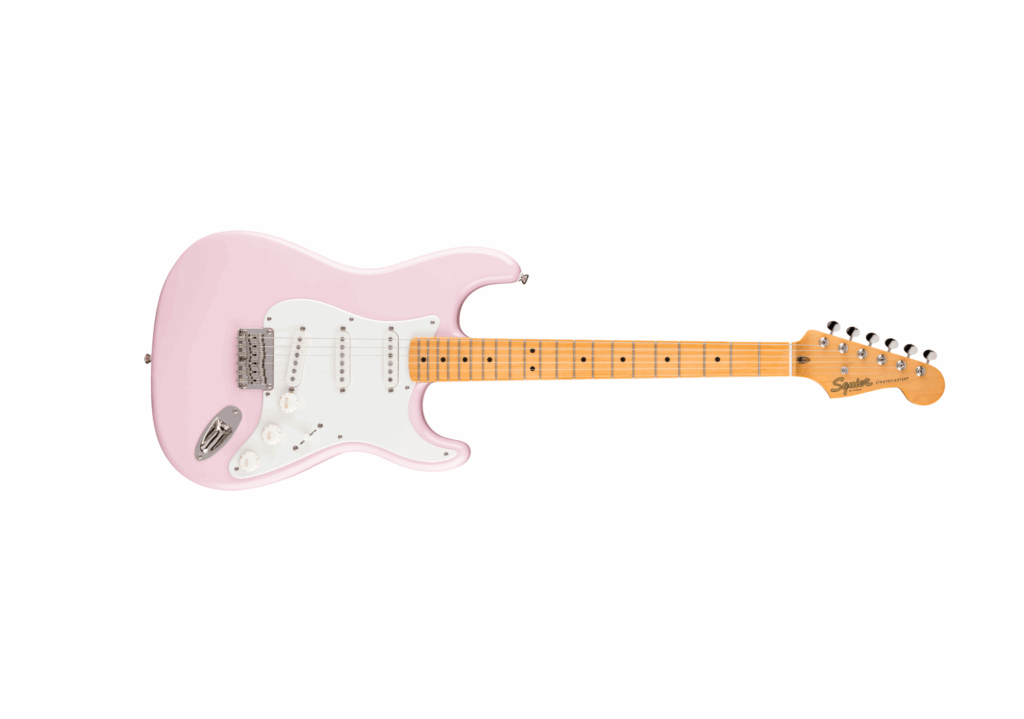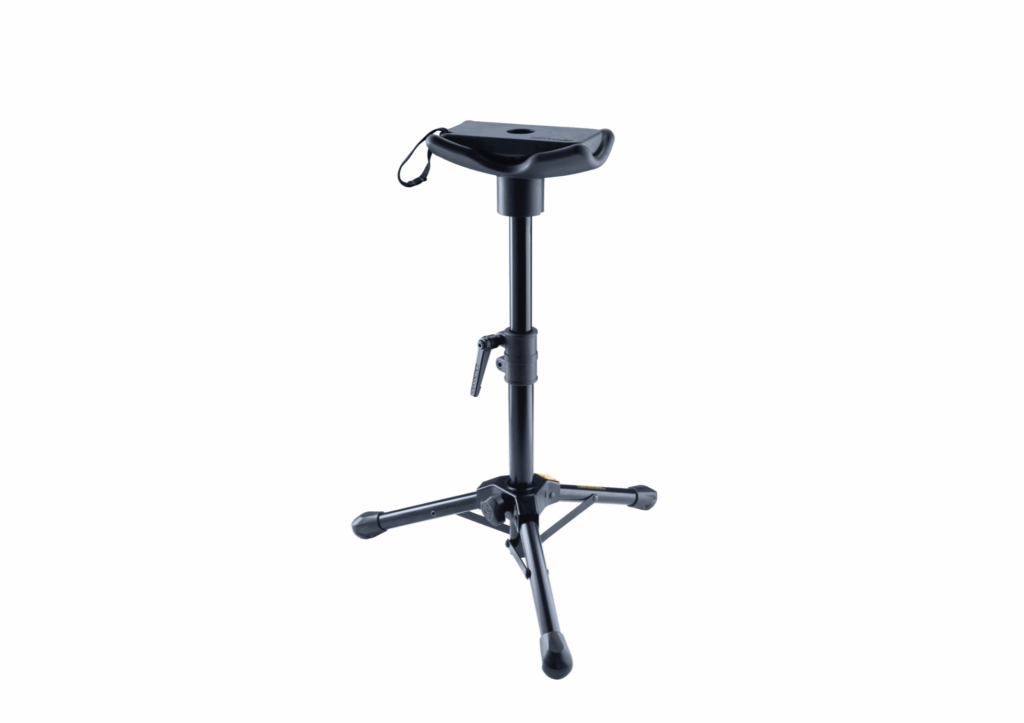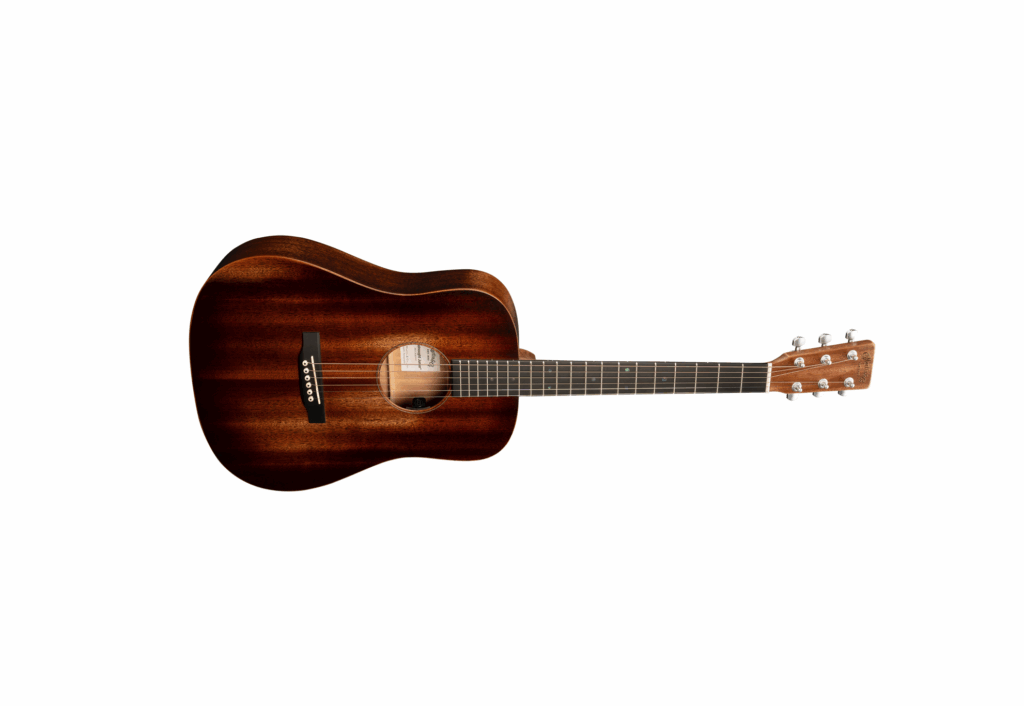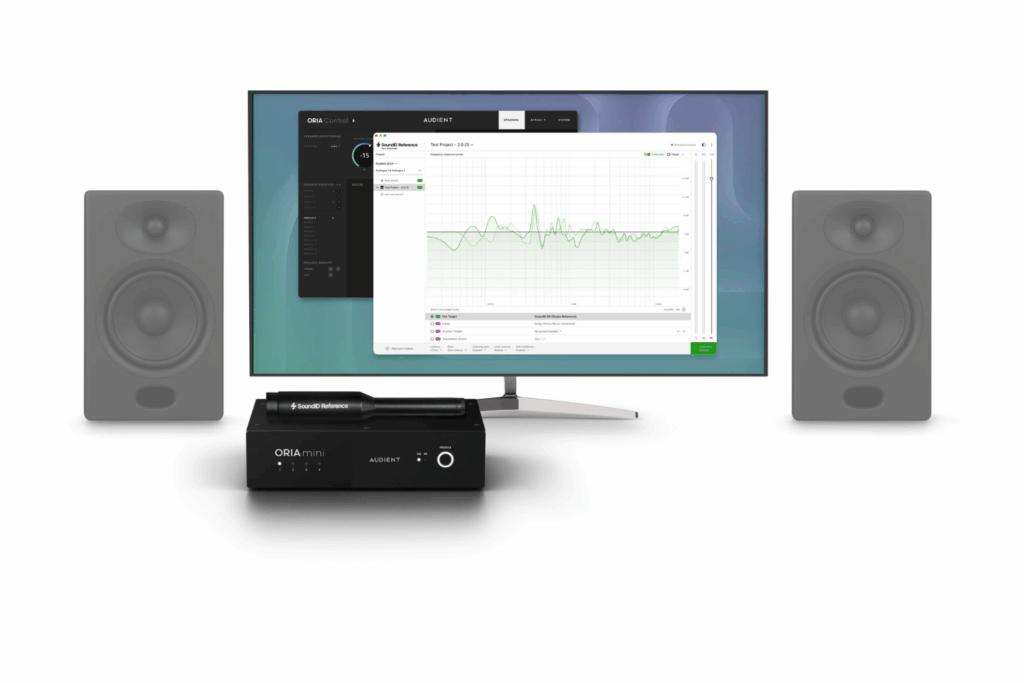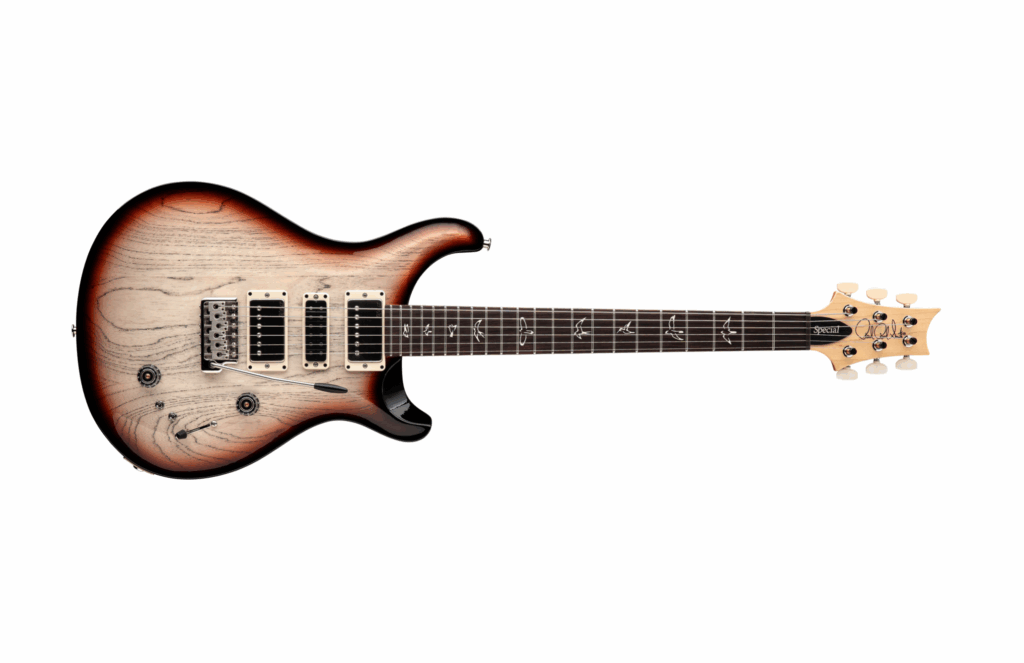Sheeran Looper + (Plus) | Electric Factory | RRP: $599.00
If you’ve seen more than 30 seconds of Ed Sheeran performance footage, you’ll know that he is a master of looper pedals; a “Super Looper”, if you will. In 2017 Sheeran was forced to defend himself against sceptical fans who saw him adjusting his microphone while the strumming of his acoustic guitar continued to play in the background, accusing him of “miming” and playing to a backing track. Sheeran explained via Twitter, now X, that “… everything I do in my live show is live, it’s a loop station, not a backing track.”
Ed Sheeran Looper +
The thing I respect most about loopers is that they encourage the musician to embrace unintentional dynamics in their performance. Once you start a recording, you either commit and dub in with the next part, or you throw the baby out with the bath water and start again. For a musician who has won four Grammys and gone platinum more times than you and I have appendages to count, starting over again isn’t an option.
Read more gear reviews here.
Explaining the functionality of his loop station to a concert audience in 2022, Sheeran commits to deleting the audio “on the spot” after each performance so that it “will not be the same at the next gig”. I have a lot of respect for the layer of sentimentality; the uniqueness; the ethereal fragility this imbues on each performance.
With this context in mind, the key aspect I’m looking for in a looper pedal is ease of use. I want to be able to focus on my performance rather than having to worry about programming in between, or even during songs. I’m also loath to spend more than a few minutes learning how to use the thing in the first place. Just let me loop my dang guitar!
Headrush Sheeran Looper Plus
The Headrush Sheeran Looper Plus is perfect. Sleek and contemporary on the outside, yet surprisingly reminiscent of a VCR recorder or a hand-held video camera in its operation. The red, green and orange LEDs and the words ‘PLAY’, ‘REC’, ‘STOP’ add a sense of familiarity and nostalgia to its use. Children of the ‘80s, ‘90s & ‘00s, rejoice!
The 36 x 28mm display provides only the most essential information you need during a performance – even while menu scrolling I can’t recall seeing more than one word on the display at a time. I love the little progress bar that moves along the top of the display, a “you are here” marker on the journey of your performance parts.
The two spring-loaded pedal switches (62mm x 57mm) on the left and right of the unit are marked according to their function: ⬤ + ▶ (record and play) on the left and ■ (stop) on the right, much like their VCR counterparts. The pedals are padded to prevent any metal-on-metal contact, and the switches depress smoothly with the perfect amount of resistance. In fact, almost everything that moves on the unit is soft and smooth and has the perfect amount of resistance. The only moving part that makes a sound is the 8mm power button on the back next to the 9V (0.5A) input. The 28mm function selection dial or ‘encoder’ on the left of the unit rotates silently and in perfectly spaced increments – you don’t feel at risk of overscrolling through menu options. The three 15mm gain knobs on the right of the unit (for instrument in, mic in and main out respectively) also rotate with the perfect amount of resistance, enabling precision signal level dialling. An added bonus is the signal level metre beneath each respective knob, each with four LED lights indicating gain levels of -20dB, -6dB, -3dB and “MAX”, so you can monitor your levels even in the dingiest of pubs or (like me) the dankest of bedroom studios.
I’m not one for reading manuals unless I can’t figure out a function on my own. I owned a HD500 once and I’m fairly sure I only ever used it to about 60% of its capability. Hence, I was gleefully encouraged when I managed to fix the Sheeran Looper Plus’s only “hurdle” (if you can call it that) within about 15 seconds, just by snooping through the menus. Out of the box, when you press the Record/Play button a second time after recording your first part, it immediately enters dubbing mode, which means you have to be ready to perform and record the next part immediately. I can see why someone like Ed, in all his mastery, would prefer this logic by default. I’m not that confident. Thankfully, the Logic menu allowed me to change the logic of the Record/Play button from [Record > Dub > Play] to [Record > Play > Dub].

The Sheeran Looper Plus features a combo XLR & ¼” TS mic input as well as left (mono) and right ¼” TRS inputs for instruments and outputs. It also features a ¼” input for a footswitch, ⅛” MIDI in and USB-B port. The unit comes with a 9V power adapter, four AA batteries (yes, it can run on batteries and yes, they were in fact included), a ⅛” to MIDI adapter. The unit came nestled in a styrofoam bag and cradled between two blocks of styrofoam, in a box measuring 30cm long x 23.5cm wide x 14cm deep. The whole package weighed about 2.5kg while the unit on its own weighed about 1.8kg. The main body of the unit is 21.5cm x 14cm. And sits about 6.5cm off the floor at its tallest point. For those looking for something more involved, there’s also the Sheeran Looper X, with eight footswitches, separated into four tracks, and footswitches for ⬤ + ▶, ■, Mode and Function controls as well as additional inputs and outputs.
At a very reasonable price point, the Sheeran Looper Plus is ideal for live musicians who want a simple looper that does what it says on the box; a silent wingman, guiding you through your performance, just like mum or dad with the cam-corder, filming your first music performance and high-school, encouraging you to embrace that little fret buzz in the last part because it’s part of a larger whole now and there’s no such thing as mistakes, only learning opportunities. And maybe one day, if you’re brave and you practise enough, you’ll find the courage to switch the logic back to [Record > Dub > Play].
For local enquiries, visit ELFA.
